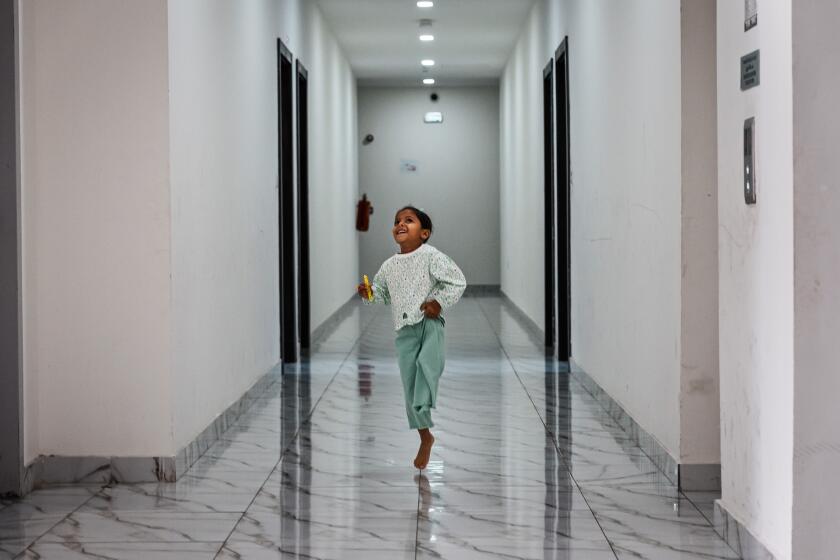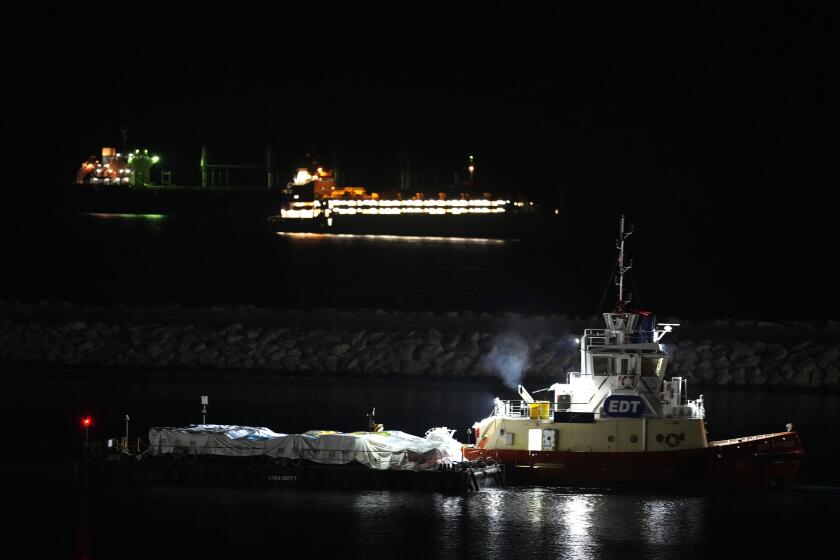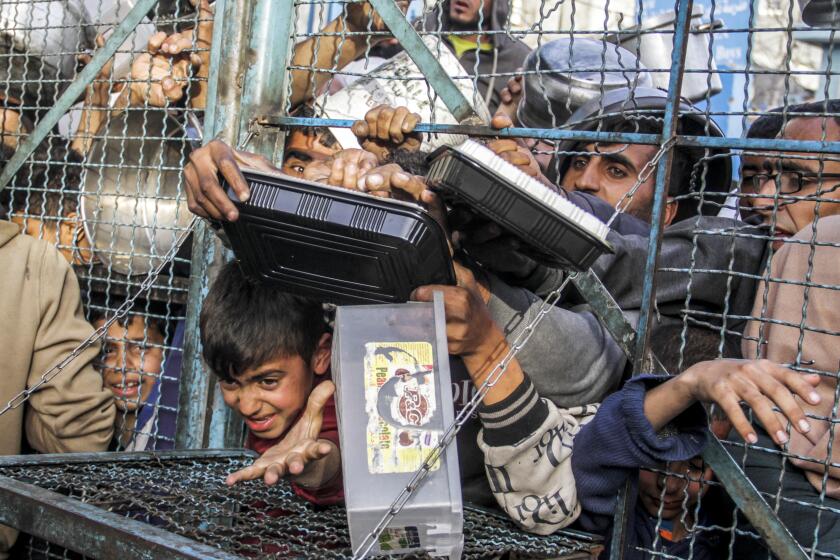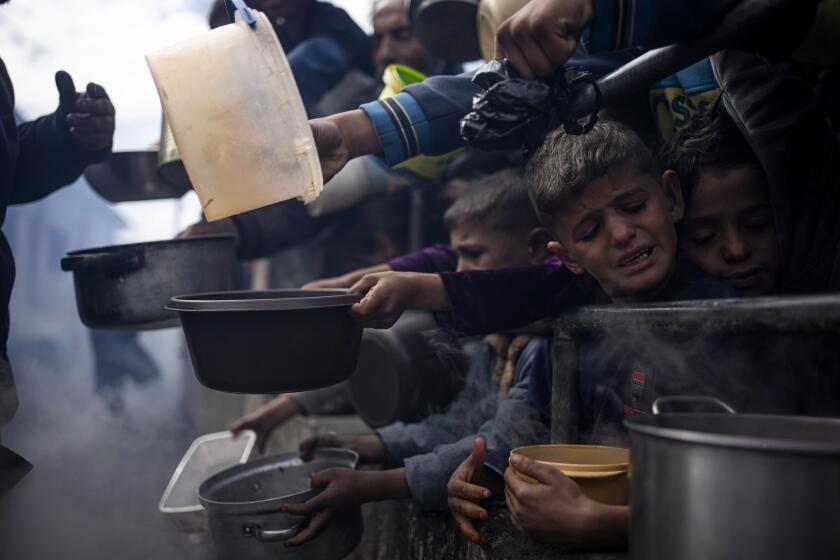Gaza floating pier will be ready within days, USAID says. Delivering aid to starving children is a priority
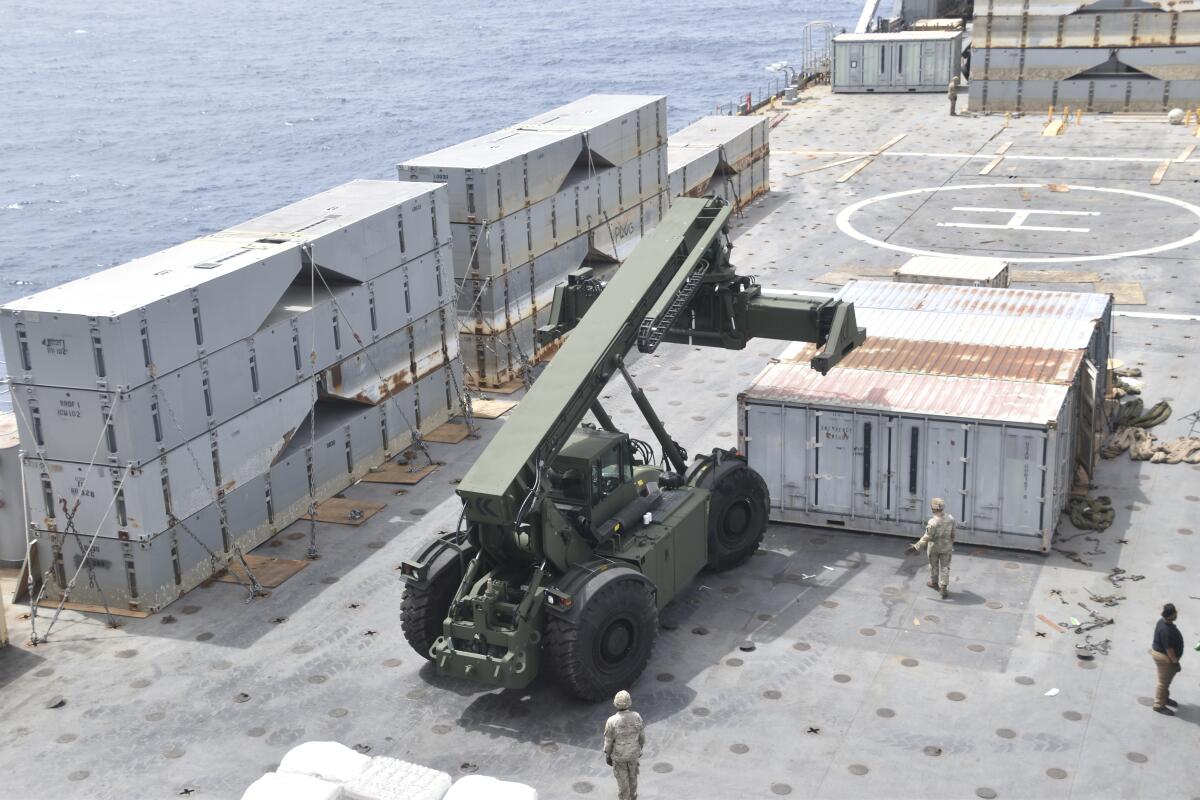
WASHINGTON â The United States expects to have on-the-ground arrangements in Gaza ready for humanitarian workers to start delivering food, treatment for starving children and other urgent assistance by mid-month when the American military expects to complete a floating pier for the aid, an official with the U.S. Agency for International Development said.
But aid coming through the new U.S.-led maritime route still will serve only a fraction â half a million people â of those who need help in Gaza, the USAID official stressed to the Associated Press. They are some of the agencyâs first comments on the status of preparations for the Biden administrationâs $320-million Gaza pier project, for which USAID is helping coordinate on-the-ground security and distribution.
USAID made one of the officials working on humanitarian operations in Gaza available on condition the official not be identified, citing security concerns given the personâs work in a conflict zone.
Israel-Hamas war: In Qatarâs capital, a compound housing Palestinian medical evacuees from Gaza is a living catalog of what war does to the human body.
With the Israel-Hamas war nearing the seven-month mark and Israel restricting humanitarian aid, half of Gazaâs 2.3 million people are at imminent risk of famine, international health officials say. Under pressure from the U.S. and others, Israeli officials in recent weeks have begun slowly reopening some border crossings for relief shipments.
Children under 5 are among the first to die when wars, droughts or other disasters curtail food. Hospital officials in northern Gaza reported the first deaths from hunger in early March and said most of the dead were children.
USAID is coordinating with the United Nations World Food Program, Israel and others on security and distribution for the pier project, while U.S. military forces finish building it for the aid deliveries by ship. President Biden, under pressure to do more to ease the humanitarian catastrophe in Gaza as the U.S. provides military support for Israel, announced the pier project in early March.
The U.S. Central Command said in a statement Friday that the offshore assembly of the floating pier had been temporarily paused because of high winds and sea swells, which caused unsafe conditions for the soldiers. The partially built pier and the military vessels involved have gone to the Port of Ashdod and will continue the work there.
With too little humanitarian aid reaching Gaza over land, the United States is leading an effort to build a floating pier that will allow deliveries by sea.
With warnings of âimminentâ famine in Gaza, there is a global push to get more aid to Palestinians amid the Israel-Hamas war. What are the roadblocks?
A U.S. official said the high seas will delay the installation for several days. The official, who spoke on condition of anonymity to discuss operation details, said the pause could last longer if the bad weather continues because military personnel and divers have to get into the water to do some of the final installation.
The United Nations has been muted about its role in the aid deliveries.
âWe want to see more land operations. This is a sea operation,â U.N. spokesman Stephane Dujarric said Wednesday. âWe are working with them, but obviously we have certain parameters that need to be respected; notably, the basic humanitarian principles that we have of independence and being free from all sorts of military.â
The struggles with the first aid delivery through a newly reopened land corridor into northern Gaza on Wednesday underscored the uncertainty about security and the danger still facing relief workers.
Israeli settlers blocked the convoy before it crossed, and then Hamas militants diverted a World Food Program truck inside Gaza before it made it to its destination.
A new report says nearly 282 million people in 59 countries suffered from acute hunger in 2023, with war-torn Gaza hosting the largest number.
In the Palestinian territory, civilians have been cut off from most aid supplies, bombarded by Israeli airstrikes and driven into hiding by fighting. Acute malnutrition rates among children under 5 surged from 1% before the war to 30% five months later, the USAID official said. The official called it the fastest such climb in recent history, more than in grave conflicts and food shortages in Somalia or South Sudan.
One of the few medical facilities still operating in northern Gaza, Kamal Adwan Hospital, is besieged by parents bringing in thousands of malnourished children for treatment, the official said.
Aid officials believe many more starving children remain unseen and in need, with families unable to bring them through fighting and checkpoints for care.
Saving the most gravely stricken children in particular requires both greatly increased deliveries of aid and sustained calm in fighting, the official said, so that aid workers can set up facilities around the territory and families can safely bring children in for the sustained treatment needed.
Knickmeyer writes for the Associated Press. AP writers Lolita C. Baldor in Washington and Edith M. Lederer at the United Nations contributed to this report.
More to Read
Sign up for Essential California
The most important California stories and recommendations in your inbox every morning.
You may occasionally receive promotional content from the Los Angeles Times.
